- Home
- P. T. Deutermann
Sentinels of Fire Page 7
Sentinels of Fire Read online
Page 7
Surprised, I nodded, tried to think of something to say, and then backed out of the cabin. I already felt different, even though I knew full well I still had the captain to fall back on. The officer with the most experience. The owner of the whole shebang when things went off the track. Like that UNODIR message: I had wholeheartedly supported doing that, but when the shit-o-gram came back from our squad dog, as commodores were called when they weren’t listening, it wouldn’t be addressed to me. I wondered if I was being a little bit disloyal. I started aft.
Even after two months, I was still getting used to the scale of a destroyer command. I’d come to Malloy from an Essex-class, thirty-eight-thousand-ton, big-deck carrier known throughout the fleet as the Big Ben. Malloy was my first destroyer, and the transition from thirty-eight thousand to twenty-two hundred tons had been initially unsettling. Between the ship’s company and the air group, there had been nearly three thousand men on board the Franklin. Malloy’s full wartime complement was one-tenth of that. In a carrier, you might know most everybody in your department. In a destroyer, you knew everybody, and everybody knew you. I’d never felt conspicuous in Franklin; here I felt like I was onstage almost all the time. It had been a big change.
Back on the fantail I found the bosun’s crew ready to deploy the homemade sea anchor. There were plenty of hands to help, as all the forward topside gun stations had been cleared out in case that bomb went off. Jimmy Enright, the navigation officer, walked over.
I asked him if we’d heard back from the fleet EOD people. He pulled me aside, away from eavesdropping ears.
“Negative, sir. And based on what I’m seeing on the Fox broadcast, they’ve got bigger problems than one unexploded bomb down there on Okinawa. That last big raid? That was over a hundred aircraft, and they put three big-decks out of action, hit a battleship, sank an escort carrier and three transports. Plus, the Army’s apparently getting its ass handed to it on the south end of the island.”
“So we are really on our own up here, I guess,” I said.
Jimmy shrugged. “Always have been, XO. Here’s Marty.”
The gun boss walked back to where we were standing. “I’ve cleared all the topside people out forward, and we’re ready to take tension on the bomb.”
“How much damage is this going to do when it pulls out?” I asked. I realized then that I was about to make a decision without ever having seen how the bomb was wedged into the ship’s superstructure.
“Front half is buried into the deck behind the signal bridge, so the only way to pull it is to twist it out of its hole, warp it between the mast and the forward stack, under the port flag bag, and hopefully over the side without hitting the main deck.”
“Hopefully.”
“Best we can do, XO. Can’t risk getting a damage control party close enough to dislodge it outta there. This way, if it goes, it eats metal, not people.”
“Right,” I said. Should I go up there, I wondered, and take a look for myself? Marty was an experienced department head. The captain was giving me the chance to make the big decisions here, so if I went up there it would indicate that I didn’t quite trust Marty’s judgment. I decided to proceed.
“Warn the engineers, too. If that thing goes off, it might happen at the waterline, and that could open Number One Fire Room to the sea.”
“Already done, XO,” Marty said. “We’re as ready as we’re gonna be. I’m not thrilled with this lashup, but we can’t have another kami come in strafing and set that thing off where it is.”
“Very well,” I said. “Proceed, then.”
Marty hesitated, as if he were looking around for the captain. I just stood there, which was when Marty realized that the captain was not going to come out and watch. He nodded.
I had the word passed over the 1MC that we were about to pull that bomb off the forward superstructure and all hands should stay well clear of the forward stack. I saw Marty giving the go-ahead to Bosun Dougherty. The chief looked over at me, and I nodded back at him. Then he started giving orders, and the working party picked up the unwieldy canvas-covered, wood-framed life raft, carried it to the port side, stabilized it for a few seconds on the lifelines, and then heaved it over the side. I felt the ship’s rudder bite in and the fantail of the ship begin to swing out and away from the bobbing raft. The gun crews behind the after stack were crouched behind their splinter shields to get some metal between them and where the bomb was wedged, invisible from the back half of the ship.
I watched from the very after part of the port quarter, so I could see when that manila mooring line began to tighten up. Right now it was still lying slack on the water, but the raft was turning over as its bridle pulled half of it below the surface, and then the whole thing submerged suddenly, perpendicular to the mooring line, and filled like a kite coming into the wind. The mooring line submerged with it, and then all the slack came out of it with a whipping noise as the raft resisted being pulled against the sea. A moment later there was a tearing sound as steel gave way forward, causing everyone who heard it to wince. There were two loud bangs, a moment of silence, and then more metal being deformed violently, followed by a splash on the port side.
Marty, who’d been watching from the portside forty-millimeter guntub, gave a thumbs-up. The bomb was gone. Suddenly the life raft, no longer under tension, popped up about a hundred yards from the stern of the ship. I was wondering if that bomb was still attached to it when there came a heavy thump, like a depth charge, followed by a foaming mass of smoke and bubbles. Marty came down to the fantail as the crew cheered. I was wiping the sweat off my face as he arrived.
“Good job, Guns,” I said.
“The monkey shit came off the tail propeller just as the bomb went over the side,” he announced. “Thought we were gonna get a show after all.”
We both looked back at the discolored patch of water behind us, where dead fish were glinting in the afternoon sun. I wondered if the captain had felt that thump.
“Okay,” I said. “Have the OOD pass the word to reman all GQ stations, and let’s get back to business before more Japs show up.”
Then I went forward to inspect the area where the bomb had been. When I got there I saw a problem. A big problem. The departing bomb had torn away the entire bottom section of the air-search radar waveguide as it lurched over the side. In fact, that was probably why the radars had gone down after it hit. We were blind until we could get a new waveguide, and that would require getting to a destroyer tender. Not only that, it appeared that the buckler plates supporting the mast had been ripped off as well. I went over to one of the wire stays supporting the mast and grabbed it with my bare hand. As the ship rolled gently in the sea, I could feel the stay tighten and then loosen slightly. Was that normal play, or were the stays the only thing holding up the mast now?
I could hear the CIC team remanning their stations below me. Time to get a report off to CTF 58, but first I needed to report in to the captain. I did my normal entry routine, two knocks, then stepped through. The inport cabin was fully dark, and the captain was nothing more than a long lump under the bedcovers, snoring softly. Because of all the electronics equipment, the CIC was air-conditioned, and the ship’s architects had kindly attached a small, four-inch vent pipe to bleed some of that precious cold air from Combat’s air-conditioning system down into the inport cabin, which was now almost cold. Ordinarily, I would have awakened the CO and told him what was going on and that we needed to get down to one of the repair ships at Kerama Retto, an island adjacent to the main island of Okinawa Shima.
On the other hand, the captain had told me to take care of business. The fact that he was sound asleep at two thirty in the afternoon while the ship was still very much vulnerable to kamikaze attack said it all. The man was simply exhausted.
I withdrew from the cabin and closed the door softly behind me. Then I went up to Combat. There I dictated a message to the navigation officer, describing the bomb strike and reporting that the mast had been compromise
d and that our air-search radar, our reason for even being here, was out of business. I then requested permission—no more UNODIRS!—to proceed to Kerama Retto for urgent repairs. I sent it to Admiral Chase, who was Commander Task Force 58, with a copy-to our squad dog, Commodore Van Arnhem, as well as to the Service Squadron Ten commodore at Kerama Retto so he would have a heads-up on what we needed. It was entirely possible we’d be sent on to Leyte in the Philippines if none of the repair ships anchored at Kerama Retto had a waveguide. That wasn’t an altogether unpleasant prospect. Anything but this. I told Jimmy to get the ship back to our assigned station in anticipation of a relief ship showing up sometime in the next twenty-four hours.
“Still nothing from Waltham?” I asked.
“Negative, sir, and we still don’t have any CAP overhead. That big strike this morning made a shambles of the flight schedules, apparently. Pray that the Japs shot their wad for today.”
“Pray away,” I said, “but keep your people on their toes. Brief the gun crews that we have no radar. All those guys—that’s a lot of eyes. It’ll be better when the sun goes down, but the skipper says it’s only a matter of time before those bastards start flying at night.”
Jimmy seemed surprised. “But how could they land back at—oh.”
I smiled. It was not like they expected to fly home and land.
Jimmy shook his head. “I’ve lost track, XO. Are we still at GQ?”
“No, go back to port and starboard. If we stay at GQ all day everybody will be a zombie. Get some people into their racks, and tell the galley—no, I’ll take care of that.”
Jimmy nodded, then surprised me. “Where’s the skipper?” he asked.
“In his cabin, writing up the reports.”
He gave me a look that said Sure he is, but he didn’t say it. I fake-punched him on the shoulder and left Combat. Jimmie Enright was good people and no dummy.
I went out onto the bridge, which was now fully remanned. The ship was already headed back east. Our assigned radar picket station was about eight miles distant. The OOD, Lanny King, had taken the initiative to start us back toward our station, but he was headed straight for that point in the sea. I cautioned him about straight courses. “There’s no big hurry, so go fifteen knots, but zigzag while you do it. The last two kamis got in on us undetected, and that’s with the radars working, okay?”
“Yes, sir, sorry, sir, I forgot.”
“Everybody’s tired, Lanny. Keep asking yourself: What else should I be doing? And get word to Lieutenant Fontana to come find me.”
“Aye, aye, sir.”
FOUR
One day later, we arrived at Kerama Retto, one of several small islands off the west coast of Okinawa Shima, where the battle against the Japanese 32nd Army was in full fury. We had approached the anchorage just before dawn from the northwest, and the southeastern horizon had been filled with flashes of artillery and the explosions of battleship rounds in the low hills to the right of our approach. The allied forces had seized all Okinawa’s small offshore islands before assaulting Okinawa proper in order to protect their flanks and to set up artillery and logistics bases. The shape of Kerama Retto provided a relatively protected deep-water cove, where the Navy had anchored several repair and replenishment ships. Protected was a relative term: The Japanese had already managed to sneak a miniature submarine into the cove and torpedo an ammunition ship, and the kamikazes attacked frequently. The Ryukyu Islands were the tops of submerged sea mountains, and the drowned slopes of Kerama Retto were already littered with the debris of ships and support craft that had been towed out and scuttled because they were too heavily damaged to be repaired.
Malloy was directed to go alongside USS Piedmont, a seventeen-thousand-ton ship designed as a floating repair facility. She looked like an ocean liner, with her two stacks and long, covered galleries down each side, but she’d been painted haze gray and was sporting four five-inch single mounts, two each fore and aft. We discovered the Waltham tied up on the other side of the Piedmont. Her forward superstructure, including the bridge, mast, gun director, forward stack, and most of the CIC spaces, was a tangled jumble of blackened steel wreckage. Mount fifty-two, the second of the two gun mounts on the bow, was uprooted, with its two blackened guns pointed down at the deck below. There was a charred hole deep on her starboard side just abaft the beam, where Number Two Fire Room was located. As Malloy maneuvered to cross under the tender’s stern, we saw some of her crew out on her weather decks, mostly standing around, as if still stunned by the extent of the damage. Even while tied up to the tender, she was listing ten degrees to starboard.
I wondered how many of the ship’s officers had been lost. The captain, watching the gun boss conduct the landing maneuver from his chair, noted that neither the Union Jack nor the American flag was flying anywhere on the ship, which meant they were going to simply scrap her. “They’ll salvage whatever they can in the way of critical parts,” he said, “then tow her out of here and open all four main spaces to the sea.”
Just like that, I thought. An entire ship. I wondered who’d made that decision.
Jimmy Enright made an interesting point. “There’s a waveguide on that mast over there,” he said. “We only need about ten, fifteen feet of good metal. We need to tell the ServRon Ten people that, before they…”
“Good call, Jimmy,” the captain said. “Take that for action.”
Once the ship was moored alongside the tender, a gangway was lifted by one of her cranes down to the forward camel between the ships and then positioned on Malloy’s starboard side. Then our accommodation ladder was lowered to the camel as well. The camel, a fifty-foot-long bundle of telephone poles wrapped in old rubber tires, was tied up between the ships to prevent them from rubbing against each other. A small parade of men came down from the tender, across the planks on top of the camel, and then up the accommodation ladder to our main deck. These were the repair superintendents and the various shop planners who would meet with the ship’s department heads to determine what work would actually be done. Malloy wasn’t alongside for a normal, two-week-long repair availability, just long enough to get our radar working again and the base of the mast reinforced. That didn’t mean that Malloy’s department heads wouldn’t be trying to cadge as much other repair work on balky pumps, shorted electric motors, leaking steam valves, etc., as they could. Beyond the formal repair requests, individual sailors from Malloy’s divisions would be sent on board the tender to cumshaw whatever goodies they could from trade-minded crew members. Apparently, a brass five-inch powder case, which could be cut down on a lathe to make a fine ashtray, would “buy” the most amazing things aboard a tender.
I assembled the department heads in the wardroom for the initial meeting with the senior repair superintendent, who was known as the ship’s supe. The captain joined us once everyone was there.
“Captain Tallmadge, I’m Lieutenant Commander Weems from ServRon Ten,” the supe said. “Our orders are to get your waveguide repaired, the mast stabilized, and then to get you out of here as soon as possible and back on station. Admiral Chase wants all of that done in twenty-four hours.”
“Understood,” the captain said. “Do you have a replacement waveguide?”
“We do now,” the supe said.
“Waltham’s?”
“Yes, sir,” the supe said. “She’s been struck. We have a stripping crew on board, and it looks like there’s about thirty feet of good waveguide left. We’ll make a splice onto your system. We need to inspect the base of your mast to see how much shipfitter work needs to be done.”
“Okay,” the captain said. “Does that mean no emergent work?”
The supe smiled. “Your guys can try, Skipper. Officially, no, but…” Our department heads all knew the game, and apparently, the less said, the better.
“Then we’re done here,” the captain said. “My department heads will help your people make it all happen.”
“My shop supervisors are already on board,” th
e supe said. “They’re waiting outside.”
The captain nodded at the four department heads, who got up and filed out. The ship’s supe remained at the table.
“How bad was it on Waltham?” the captain asked.
“Very,” Weems said. “CO, XO, three of four department heads, nine other officers killed, and fifty-seven others missing and presumed lost. A hundred more wounded. Two kamis came at the same time. One did the front end, the other got into the after fire room. Both were carrying bombs, from the look of it. The after-fire-room hit broke main steam lines in both engine rooms. Basically, all the main-hole snipes except for One Fire Room are gone. She’s well and truly wrecked, so she’s worth more as a spare-parts locker than a fighting ship. Plus, that crew will have to be disbanded—the ones who can are all walking around in shock. There are an unknown number of bodies down in the main spaces, and they’re going to go down with her.”
“Great God,” the captain said, his face ashen. “I guess we were just lucky.”
“They told us you pulled the bomb off with a sea anchor?”
The captain told the story. Then I asked if twenty-four hours was a reasonable objective.
“You don’t want to be here any longer than necessary, XO,” Weems said. “The kamis still attack this anchorage—we’re all sitting ducks, when you think about it. All our gun mounts are manned day and night, and we’ll need you to keep your forties and at least one five-inch mount ready at all times. Besides, your damage is minor, so they want that radar fixed and then you back on station. Oh, and the commodores will expect a call.”
Commodores, plural? Weems saw my expression. “The ServRon Ten commodore, Captain McMichaels, is embarked here in Piedmont, and your own squad dog, Captain Van Arnhem, is also embarked. Our poor skipper is camping out in his sea cabin for the moment. I believe your squadron commander is going to shift his burgee to the Dixie as soon as she arrives from Pearl. In the meantime, we’ve got ourselves a great sufficiency of four-stripers.”

 The Nugget
The Nugget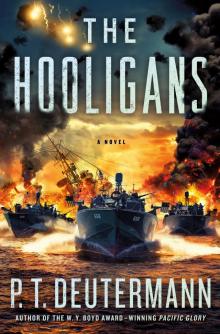 The Hooligans
The Hooligans SPIDER MOUNTAIN
SPIDER MOUNTAIN![Cold Frame [retail] Read online](http://i1.bookreadfree.com/i/03/19/cold_frame_retail_preview.jpg) Cold Frame [retail]
Cold Frame [retail] Sweepers
Sweepers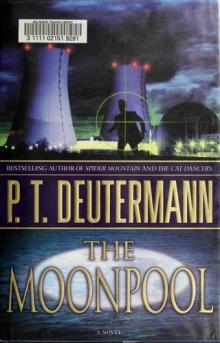 Cam - 03 - The Moonpool
Cam - 03 - The Moonpool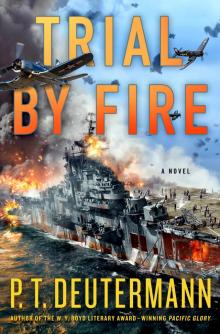 Trial by Fire
Trial by Fire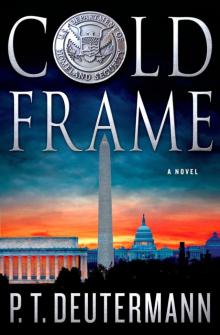 Cold Frame
Cold Frame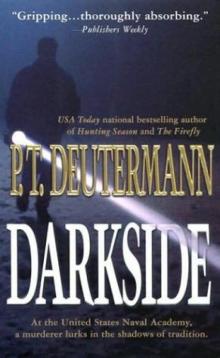 Darkside
Darkside Cam - 04 - Nightwalkers
Cam - 04 - Nightwalkers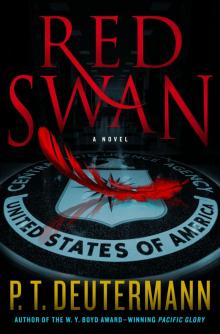 Red Swan
Red Swan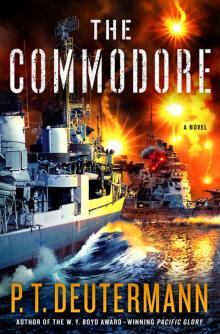 The Commodore
The Commodore Hunting Season
Hunting Season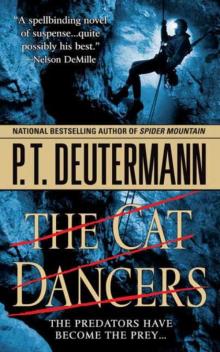 The Cat Dancers
The Cat Dancers Scorpion in the Sea
Scorpion in the Sea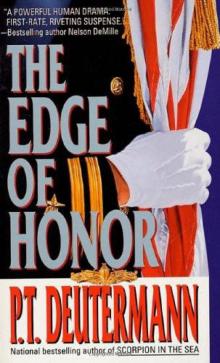 The Edge of Honor
The Edge of Honor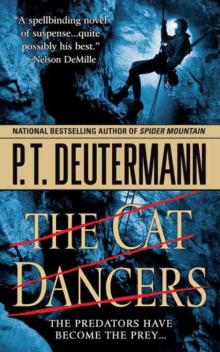 The Cat Dancers cr-1
The Cat Dancers cr-1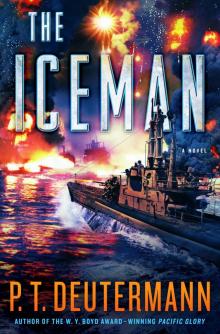 The Iceman
The Iceman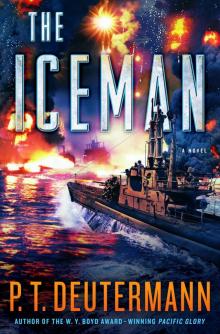 The Iceman_A Novel
The Iceman_A Novel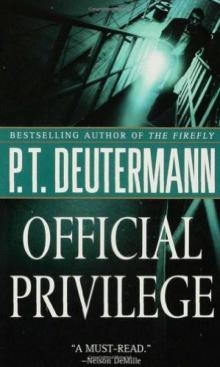 Official Privilege
Official Privilege Sentinels of Fire
Sentinels of Fire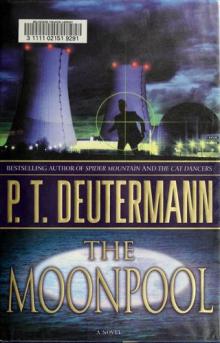 The Moonpool cr-3
The Moonpool cr-3 Nightwalkers cr-4
Nightwalkers cr-4 The Firefly
The Firefly Spider mountain cr-2
Spider mountain cr-2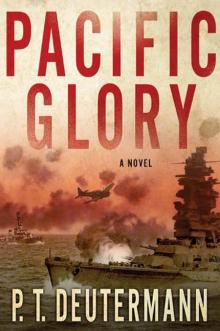 Pacific Glory
Pacific Glory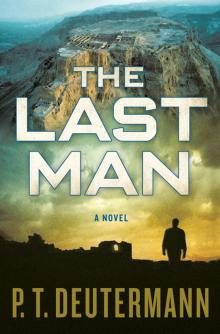 The Last Man
The Last Man